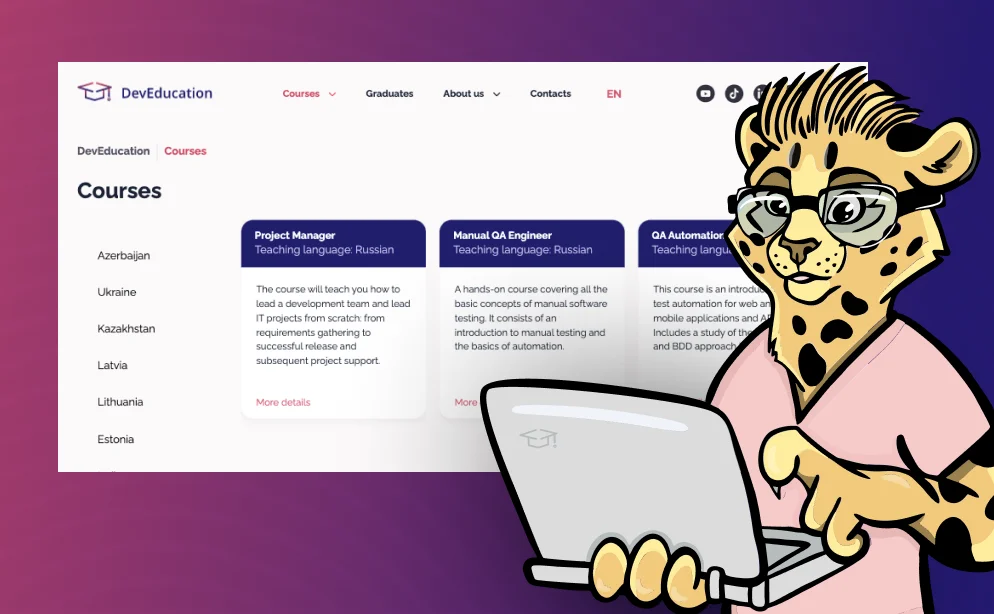The last official HTML specification was published on December 24, 1999 and is called HTML 4.01. It is a revision and update of the HTML 4.0 version, so it does not include significant news. The first formal document with the description of HTML was published in 1991 under the name HTML Tags (HTML tags) and can still be consulted online today as a computer relic.

At this time, a HTML working group, led by a man named » Dave Raggett introduced a new HTML draft, HTML 3.0. It included many new and improved abilities for HTML, and promised far more powerful opportunities for webmasters to design their pages. Sadly, the browsers were awfully slow in implementing any of the new improvements, only adding in a few and leaving out the rest. Partly, this failure can be attributed to the size of the overhaul; and so the HTML 3.0 spec was abandoned. It doesn’t stay the same for long before a revised set of standards and specifications are brought in to allow easier creation of prettier and more efficient sites. In modern browsers, the MIME type that is sent with the HTML document may affect how the document is initially interpreted.
Design of University Intelligence Course Management System and Realization of Knowledge Graph
There are some WYSIWYG editors (What You See Is What You Get), in which the user lays out everything as it is to appear in the HTML document using a graphical user interface (GUI), often similar to word processors. The editor renders the document rather than showing the code, so authors do not require extensive knowledge of HTML. HTML documents can be delivered by the same means as any other computer file. However, they are most often delivered either by HTTP from a web server or by email.

Next, XHTML 1.1 takes advantage of the extensible nature of XML and modularizes the whole specification. XHTML 2.0 was intended to be the first step in adding new features to the specification in a standards-body-based approach. Good semantic HTML also improves the accessibility of web documents (see also Web Content Accessibility Guidelines). For example, when a screen reader or audio browser can correctly ascertain the structure of a document, it will not waste the visually impaired user’s time by reading out repeated or irrelevant information when it has been marked up correctly. The original purpose of the doctype was to enable the parsing and validation of HTML documents by SGML tools based on the Document Type Definition (DTD).
Science X Account
This meant they could be added in stages, which makes it easier on the browser companies. More and more people were getting into the HTML game around now, and while the previous standards offered some decent abilities to webmasters (as they became known), they thirsted for more abilities and tags. With the proliferation of html5 application development mobile devices, the need for responsive web design became paramount. HTML responded to this demand by introducing responsive design principles. Media queries, flexible grids, and fluid images enabled websites to adapt seamlessly to various screen sizes and resolutions, providing optimal user experiences across devices.
The early 2000s ushered in Web 2.0, emphasizing user-generated content, social media, and technologies like AJAX (Asynchronous JavaScript and XML) that enabled dynamic web applications. This is the specification that we will be working with for the next decade at least, so the process of its development is relatively slow and considered. Many parts will be familiar, but there’s also plenty of new elements, attributes and abilities to get excited about. You can check the latest version of the spec if you want all the detail. A full tutorial on HTML Source about the changes in HTML5 is forthcoming.
A Short History of the Web, Cern (Text a Speech Deliv. Launching Eur. Branch W3 Consortium)
There have been many versions of HTML, so let’s also understand that version.
- Some features that were removed from the original HTML5 specification have been standardized separately as modules, such as Microdata and Canvas.
- He has been involved in different international collaborative research projects such as PLUS (Horizon 2020) OPENMAKER (Horizon 2020), New HoRRIzon (Horizon 2020), InnoSI (Horizon 2020) or OD&M (Erasmus+).
- And in the future, we can see an updated version of HTML5 again by W3C with additional features.
- The World Wide Web has transformed our lives, becoming an integral part of how we access information, communicate, and conduct business.
- At this time, a HTML working group, led by a man named » Dave Raggett introduced a new HTML draft, HTML 3.0.
- XHTML 1.0 is an adaptation of HTML 4.01 to the XML language, so it maintains almost all its tags and features, but adds some restrictions and elements of XML.
And with the same vision, he wrote the software of browsers and servers for hypertext markup language by 1990. However, CERN did not give any funds for this vital project of Sir Tim Berners-Lee. But still, Lee posted the initial description for the HTML tags in 1991, and it was finally released in 1993. The late 1990s saw the dot-com bubble, marked by speculative investments in internet-related companies.
It has become a crucial thing to learn and use while building web pages and applications. Currently, HTML5 is the latest version that is supported by most browsers. And in the future, we can see an updated version of HTML5 again by W3C with additional features. Hence, the use of HTML will continue, and developers will use it a lot to define their website and its pages inaccurately.
HTML has always changed with the world with new demands and technology and will keep changing and adding new features. A most recent update in HTML5 was the addition of canvas which was really awesome, you can use canvas to draw shapes, images, text, animations, and even an entire game upon it. I’m a web designer from Ireland, and am currently finishing my PhD in Computer Science. To Get a free quote for our services, just share your project details and contact information.
